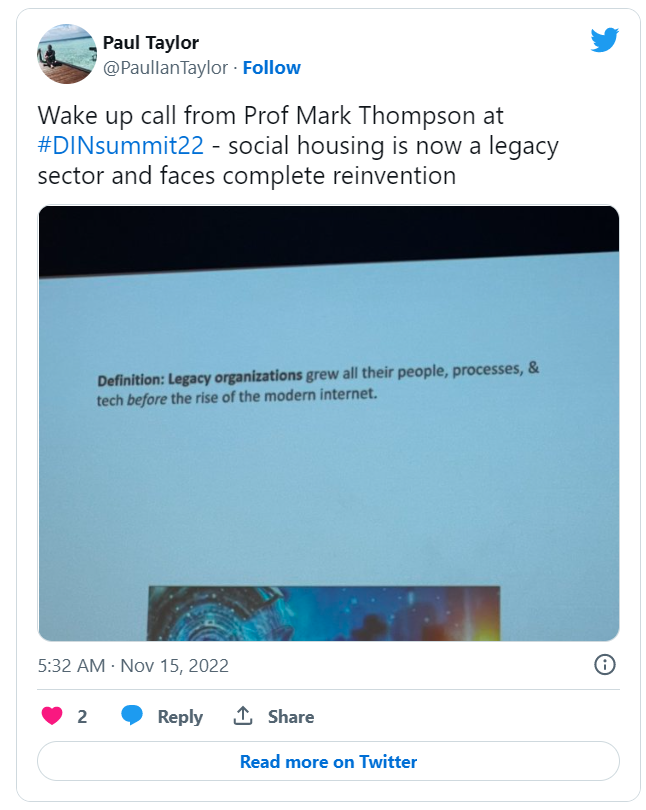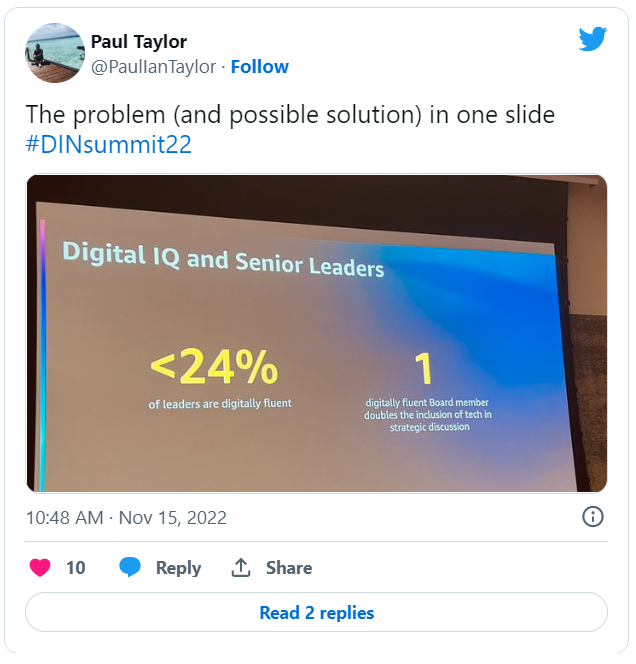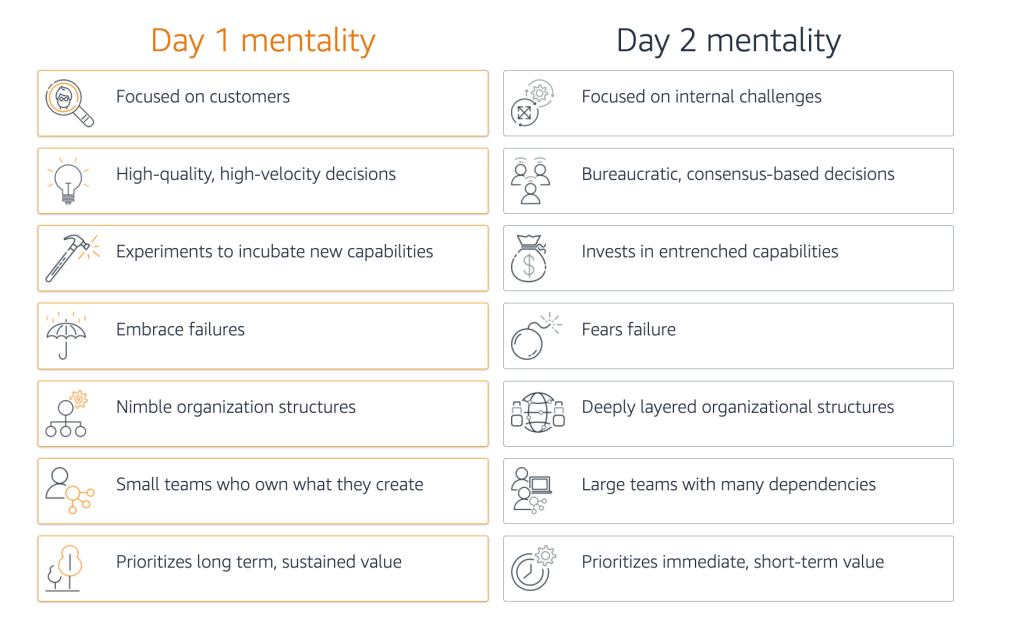The outside world can push you into Day 2 if you won’t or can’t embrace powerful trends quickly. If you fight them, you’re probably fighting the future. Embrace them and you have a tailwind ~ Jeff Bezos
Highlight of my week was the annual get together of the Disruptive Innovators Network, back in person after three years, and hosted by Amazon at their UK headquarters in London.
The opening pitch on legacy organisations came from Prof. Mark Thompson whose expertise is the digital economy. A legacy organisation is defined as one where all processes, technology and ways of working where in place before the modern internet.

How many in the social sector can be described as ‘legacy organisations’? Quite a few.
- 430+ Local Authorities
- 168,000 Charities
- 650 NHS trusts
- 43 Police Forces
- 143 Universities
- 1500 social housing providers
None of whom can survive in their current form
All facing extinction in a digital economy
The message was bleak, but there is hope: survival is possible but only if leaders are willing to change.
As Mark wrote here we can have more, and better, public services – but we need a new, more radical approach to digital modernisation.
“Leading ‘customer-first’ organisations tend to remain very focused, all the time, around their purpose: the reason they exist. They regularly cut away all the other distractions and agendas that creep into all organisations over time, and refocus their energy, time, and budget on that purpose, which is usually organised around some sort of customer.
Anything that doesn’t directly touch customers is rigorously standardised, reduced, re-used, recycled, consumed, and commoditised. Strategic focus, and budget, is constantly reoriented to the frontline – the only part that customers actually care about.”
So what’s the problem? Amazon Web Services AWS (a subsidiary of Amazon that provides on-demand cloud computing platforms and APIs) neatly summed it up in one slide:

When less that a quarter of our leaders are digitally fluent after 30 years of the modern internet is it any surprise we have whole sectors on the brink of collapse?
We need a new set of questions:
- What are the implications of new technologies for leadership at all levels?
- How will these changes disrupt and impact the business model?
- What knowledge and skills should be our priority?
- What do we hold on to from our past? What do we discard?
Just like knowledge has been decentralised through social media, leadership needs to be decentralised and ever more flattened. Making the transition from the individualist nature of leadership to a more collective focus won’t be easy.
Unless we all feel that our Digital IQs are improving – that we are ready for the challenges of an increasingly automated future – we may find we have no place in it.
Establishing a Day 1 Culture
How do companies like AWS avoid the slide into legacy? They operationalise a culture of thinking and acting as if they’d only just started – and that every day is day 1. Day 1 is about being constantly curious, nimble, and experimental. It means being brave enough to fail if it means that by applying lessons learnt, we can better surprise and delight customers in the future. Contrast this to a “Day 2” mentality: as a company grows over time, it needs to adjust its approach to effectively manage the organization as it scales. The danger is that as this happens, decision making can slow down, and the company can become less agile, moving further and further away from the customer as it rotates focus towards internal challenges rather than external customer-centric innovation.
It’s this obsession with internal challenges that preoccupies legacy organisations.
None of us can compare ourselves to Amazon – a company who are single minded in their dedication to owning the future. In 2019 their spending on R+D was $35billion which has increased year on year since they spent a paltry £12billion in 2012.
You cannot match Amazon for R+D spend , but you can emulate their mentality.

“Day 2 is stasis. Followed by irrelevance. Followed by excruciating, painful decline. Followed by death. And that is why it is always Day 1.”
The only way out of a legacy organisation is to start again. Tomorrow. Day 1.

